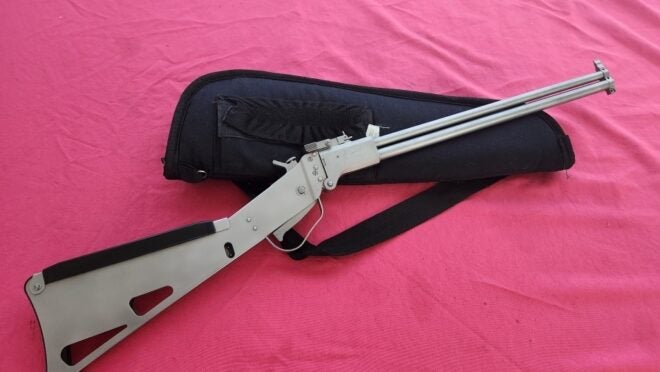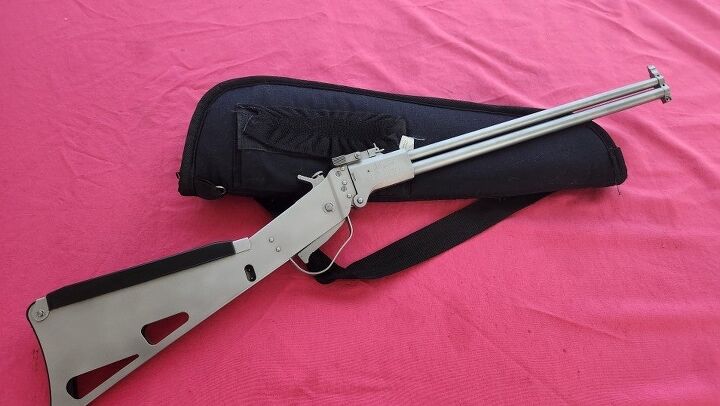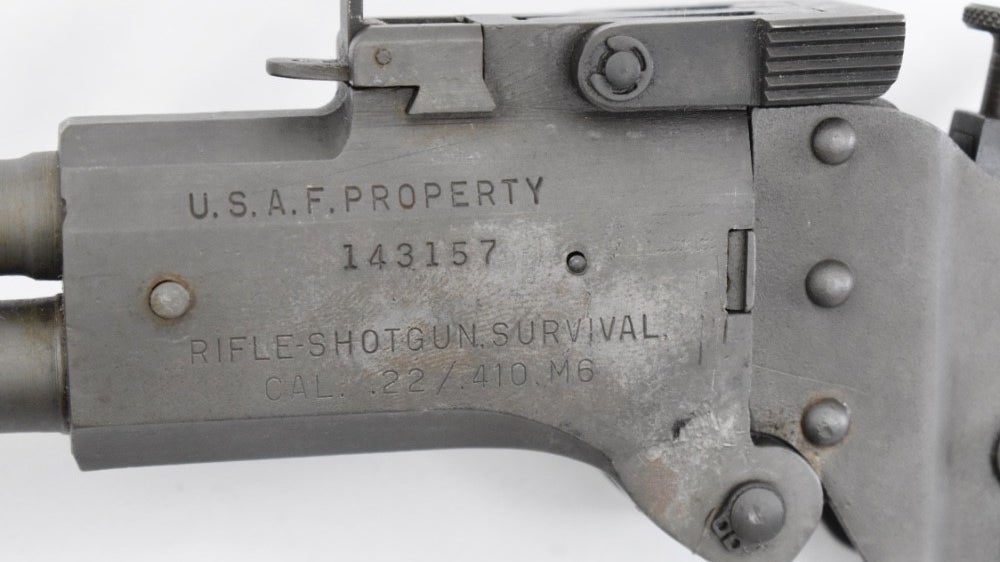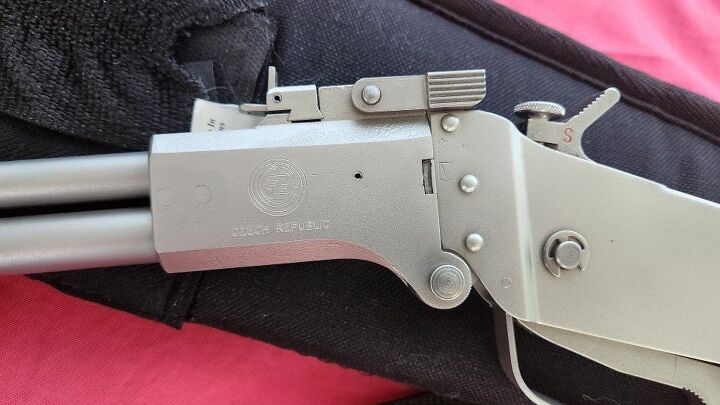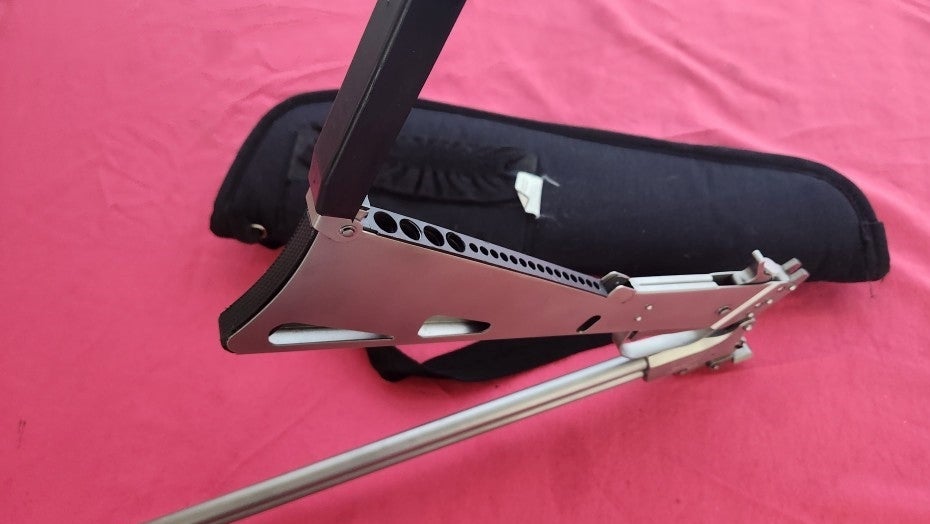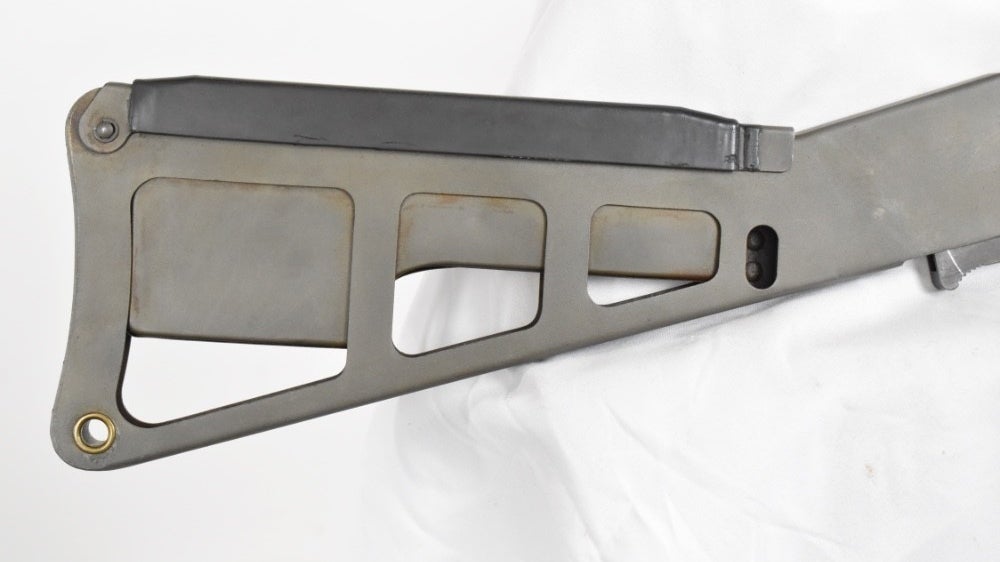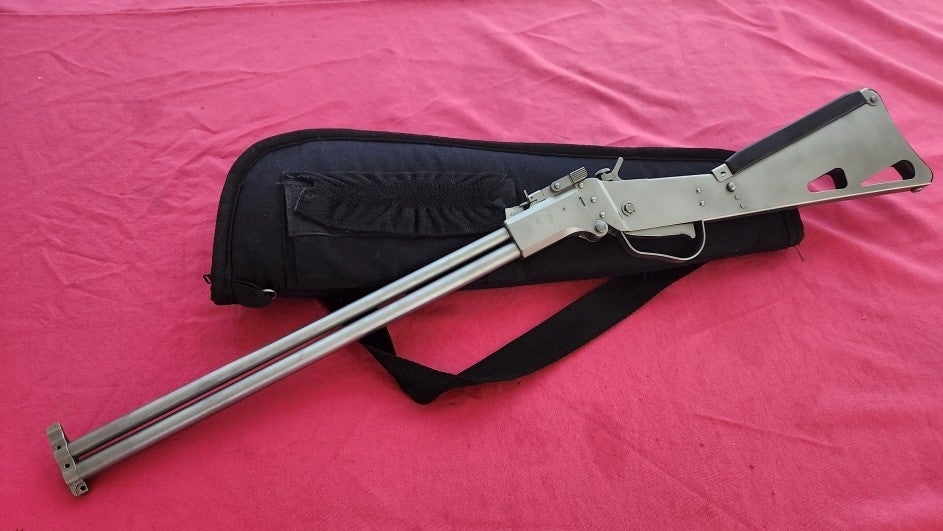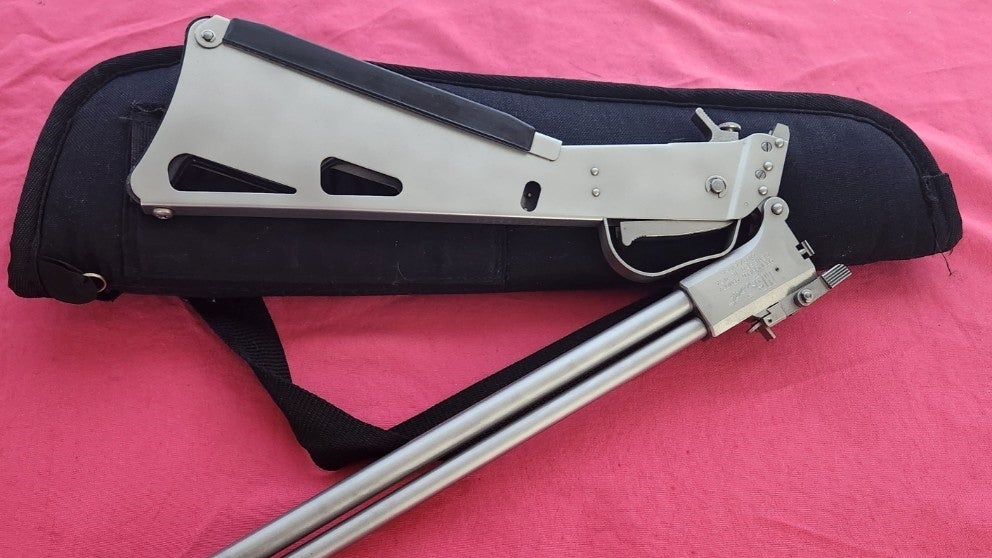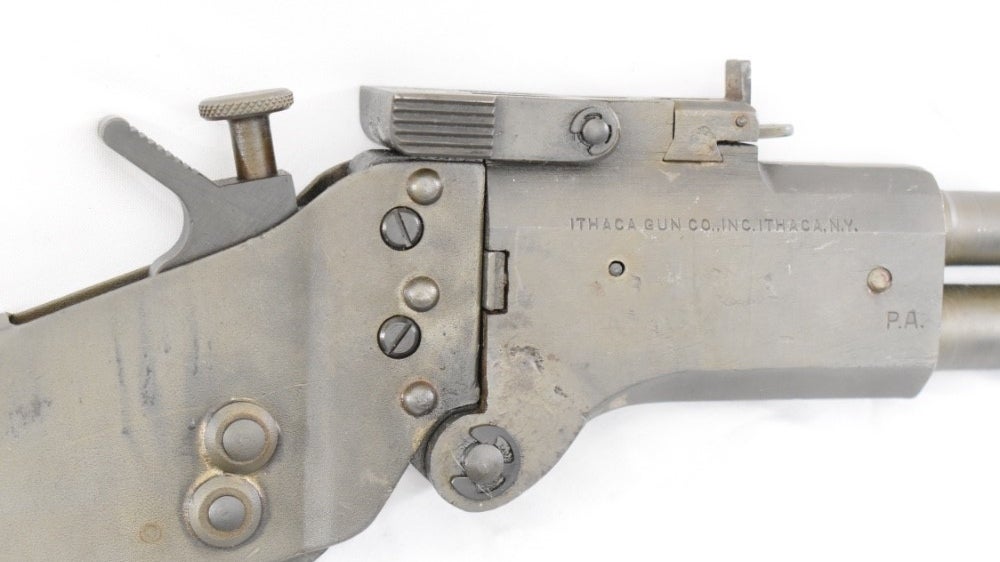Hello and welcome back to another edition of The Rimfire Report! This ongoing series is all about the rimfire firearm world and its many types of guns, ammo, shooting sports, history, and more! Last week we got knee-deep into combination guns and their heavy use of 22LR. While we specifically took a look at the Savage Model 24 combination gun, we also mentioned the M6 Scout Survival Rifle or Aircrew Survival Weapon. This handy little takedown combination gun was issued to aircrews for nearly 20 years during the post-WWII years and has not only an interesting history but quite a lively secondhand market on auction sites like GunBroker.com. Today we’ll take a look at its history, and of course, check out what people who own these rare firearms have to say about them and their performance.
More Rimfire Report @ TFB:
- The Rimfire Report: The Savage Model 24 Combination Gun
- The Rimfire Report: Iver Johnson’s Rare M1 Carbine 22LR
- The Rimfire Report: The H&K P7K3 – The Time H&K Made A 22LR P7
The Rimfire Report: The Discontinued (again) Springfield M6 Scout
The story of the Springfield M6 Scout traces back to the original Ithica/Springfield M6 Aircrew Survival Weapon developed during the 1950s by the Springfield Armory for the U.S. Air Force. The intention was to equip pilots with a compact and reliable firearm for emergency survival situations. This original iteration of the M6 was constructed with a break-action, over/under design, featuring a .22 Hornet rifle barrel on top and a .410 shotgun barrel below. The .22 Hornet was an upgrade over the previously mentioned Savage Model 24’s 22LR barrel from which the Army and Springfield presumably took design notes. 22 Hornet was considered to be more potent for both defense against and for use against wild animals over the 22LR that the Model 24 used.
The single largest difference between the M6 Aircrew Survival Weapon and the M6 Scout is that the M6 Scout is available in a wider variety of cartridges (22LR, 22 WMR, 22 Hornet), and the .410 smoothbore barrel being replaced with a rifled one to expand use to include .45 LC ammunition instead of just .410 bore shells. The only other major physical difference between the Scout and the Aircrew Survival Weapon was that the M6 Scout featured a simple trigger guard presumably for that added layer of safety and was eventually made in a Stainless Steel iteration to supplement its original parkerized offering. In addition, CZ became the principal company that manufactured the M6 Scout’s barrels and components versus Springfield’s manufacturing of the M6 Aircrew Survival Weapon. While Springfield’s markings are often engraved on the M6 Scout after 1970, CZ appears to be the one who manufactured the critical components.
Simple doesn’t necessarily mean pretty though and both the M6 Scout and the M6 Aircrew Survival Weapon share a pretty bare-bones appearance. The firearm is fairly monotone and features very little in the way of creature comforts with a particularly strange trigger – which users say was unbearably difficult to use and contributed to the rifle’s already poor reputation for accuracy. Users also report adding paracord or other types of wrappings to the firearm fore-end and stock to make it more comfortable to shoot.
The M6 Scout’s Reputation and Legacy
The M6 Scout Stainless emerged as a civilian version of its military predecessor, retaining (more or less) the fundamental design while undergoing refinements for the consumer market. One notable update was the shift to stainless steel construction, enhancing durability and corrosion resistance, crucial attributes for a survival rifle meant for diverse environmental conditions which was something that the M6 Aircrew Survival rifle apparently did not do well. Many online forums of people finding the original M6 Aircrew Survival Weapons have accompanying tales of how most of the stock, frame, and barrel have bits of rust on them that are often hastily or poorly removed before private sale.
The switch to stainless steel is something that a lot of firearms companies actually either do from the get-go or later on simply to add an additional layer of corrosion resistance, however, having stainless steel components doesn’t mean you’ll find copies of the M6 Scout without their own set of blemishes and issues – that is if you can find one at all. The only way to get these anymore is to find them through a private sale or auction, but even as expansive as GunBroker.com is, you’d still be hard-pressed to find one available at a decent price.
Typical prices for the M6 Scout can be as low as about $500 but particularly rare models, like the one featured in most of the photos in this article, start at around $900 and go on up from there. I did a quick search for a couple of different iterations of the M6 and it seems like the rarest are the original Ithica models made form the United States Air Force. These extremely rare examples go for nearly $10,000 even in relatively poor condition.
A Crude and Dubiously Effective Tool
Unlike its predecessor the Savage Model 24, the M6 is not well known for its accuracy and is instead often loathed for it. While the newer civilian CZ-marked iterations of the M6 Scout are known to have a couple of good copies here and there allegedly capable of 1″ groups at 50 yards with factory ammunition, the single biggest anecdote I’ve gathered from a wide variety of forums is that the M6 and the M6 Scout both featured terrible accuracy with virtually all types of ammunition.
Despite its reputation and official discontinuation by Springfield in the 1970s, the M6 was still iterated upon and manufactured up until about 2008. However, finding one during this period was a huge gamble as the weapon went in and out of production very frequently. Despite constant small updates and changes made to the M6 over the years, the rifle never really saw any major commercial success.
In conclusion, the Springfield M6 Scout Stainless Survival Rifle endures as an icon of what people thought was a serviceable survival weapon. Although the concept seems really cool, it seems that in practice the much lighter and simplified M6 Scout or M6 Aircrew Survival Rifle can’t hold a candle to either its predecessors or its modern imitations in terms of shootability and accuracy. However, Its legacy, stemming from civilian origins to military adoption and then back to the civilian market speaks to its enduring charm as a novel type of firearm.
As always I’d like to hear if you have anything to say about the M6 Scout rifle or any of its iterations in the M6 line. Of course, if you have direct experience with one I’m sure all of us would love to hear what you have to say about its performance! As always thanks for stopping by to read The Rimfire Report and we’ll see you all again next week!
 Your Privacy Choices
Your Privacy Choices
